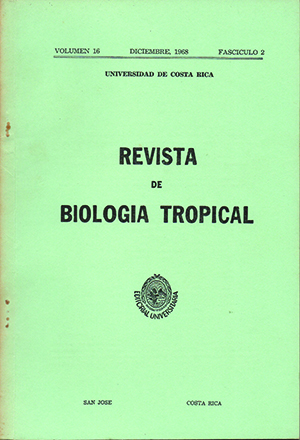Abstract
As a continuation of the work by Kerr et al., in Manaus and vicinity, Amazonas, field observations were undertaken upon the biology of sorne sting less bee species in Porto Velho and vicinity, Territorio de Rondonia, with respect to the following items: (1) Habitat, (2) Nest site, (3) Structure of nest entrance, (4) Nest cavity, (5) Involucrum, if any, (6) Arrangement of brood cells, (7) Storage pots, (8) Drainage gallery, if any, and (9) Guard bees.
All species observed are comb-builders. Additional examples of the absence of involucrum were recorded. Further details worth mentioning in each species are briefly given as follows:
1) Trigona (Partamona) testacea testacea (Klug): The nest structure of this subterranean species agrees with the description by Kerr el al., including the occurrence of a peculiar vestibular chamber and drainage gallery.
2) Trigona (Trigona) recursa Smith: The nest structure of this sub· terranean species, including the drainage gallery, is described in detail. Brood combs and storage pots are covered with common sheets of involucrum, nol separated from each other.
3) Trigona (Scaura) latitarsis (Friese): The first description of the nest of this termitophilous species is given. Nest structure and guard behavior are compared to those of T. (T.) cilipes, two nests of which were found in Manaus, one in an ant mist, the other in a termite nest.
4-6) Trigona (Scaptotrigona) xanthotrycha (Moure), T. (Oxitrigona) obscura (Friese) and T. (Ptilotrigona) lurida (Smith): Only fragmentary observations were made of these species.
7-10) Melipona (Micheneria) interrupta grandis Guérin, M. (Melipona) marginata Lepeletier, M. fuscata elanoventer Schwarz and M. seminigra abunensis Cockerell: Nest structure of all these Melipona bees is more or less similar. The aspects worth mentioning are absence of involucrum in M. marginata and the peculiar entrance structure in M. fuscata.






